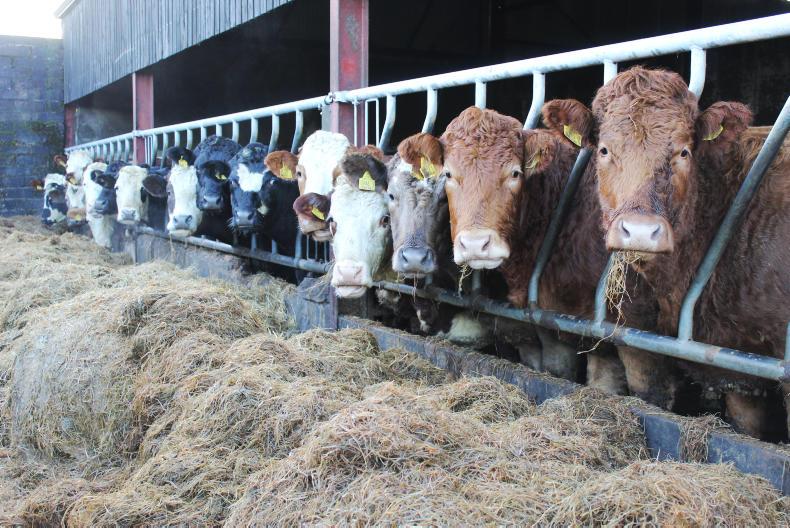Ground conditions have deteriorated quickly in northern and western regions of the country after heavy rain this weekend.
Where farmers rehoused spring-calving cows to prevent poaching, these animals should be offered high-quality silage and concentrates to maintain energy intakes during the breeding season.
When housing cows for a short period in summer, the sudden change in diet from grazed grass to silage, and back to grazed grass, impacts negatively on cow fertility.
The stress on animals caused by the change in environment can also increase the rate of early embryonic death.
Diet
Once housed, spring-calving cows should be offered the best silage on farm. This should be either bales made as first cut or from surplus grazing grass. Bales are safe to feed after a four week fermentation period.
Offer cows silage that is 70+ DMD. You should also offer cows 2kg/head of concentrate to boost energy intake for breeding and to maintain milk production.
If silage is lower in feed quality, increase concentrate levels to 3kg/day for 66 to 68 DMD fodder and 4kg/day for silage below 65 DMD. Keeping energy intakes as high as possible helps to maintain cow fertility.
Post-turnout
Getting cows back out to grass as quickly as possible is recommended. Turning cows out to high-quality silage aftermath, or fresh regrowth on paddocks, is recommended as feed value is higher and smooths the transition in diet.
Where sward quality is low, continue feeding 1kg to 2kg/head to cows for three to four days post-turnout to help transition cows back to a grass diet.
Calf creeps
During the housing period, offering calves concentrates in a bedded creep area will reduce the demands on the cow. Creep pens also provide a cleaner, dry lying area for calves, reducing disease risks.
Read more
Planning for castrating spring-born bulls
Tullamore Farm: clear TB test gets week off to good start
Ground conditions have deteriorated quickly in northern and western regions of the country after heavy rain this weekend.
Where farmers rehoused spring-calving cows to prevent poaching, these animals should be offered high-quality silage and concentrates to maintain energy intakes during the breeding season.
When housing cows for a short period in summer, the sudden change in diet from grazed grass to silage, and back to grazed grass, impacts negatively on cow fertility.
The stress on animals caused by the change in environment can also increase the rate of early embryonic death.
Diet
Once housed, spring-calving cows should be offered the best silage on farm. This should be either bales made as first cut or from surplus grazing grass. Bales are safe to feed after a four week fermentation period.
Offer cows silage that is 70+ DMD. You should also offer cows 2kg/head of concentrate to boost energy intake for breeding and to maintain milk production.
If silage is lower in feed quality, increase concentrate levels to 3kg/day for 66 to 68 DMD fodder and 4kg/day for silage below 65 DMD. Keeping energy intakes as high as possible helps to maintain cow fertility.
Post-turnout
Getting cows back out to grass as quickly as possible is recommended. Turning cows out to high-quality silage aftermath, or fresh regrowth on paddocks, is recommended as feed value is higher and smooths the transition in diet.
Where sward quality is low, continue feeding 1kg to 2kg/head to cows for three to four days post-turnout to help transition cows back to a grass diet.
Calf creeps
During the housing period, offering calves concentrates in a bedded creep area will reduce the demands on the cow. Creep pens also provide a cleaner, dry lying area for calves, reducing disease risks.
Read more
Planning for castrating spring-born bulls
Tullamore Farm: clear TB test gets week off to good start






 This is a subscriber-only article
This is a subscriber-only article









SHARING OPTIONS: